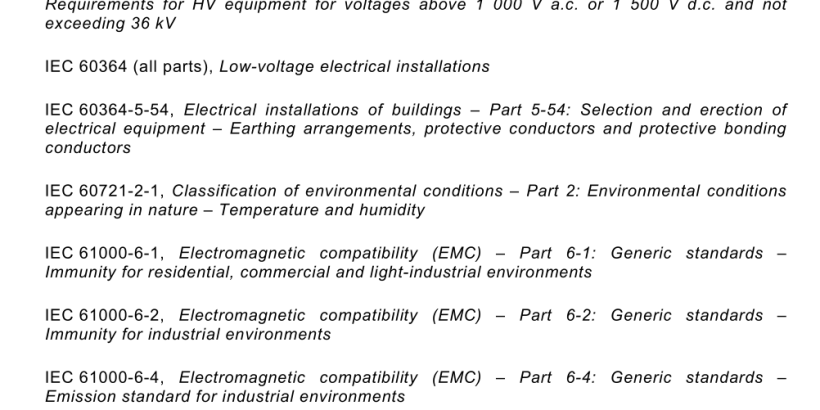IEC 61400-1:2010 pdf download – Wind turbines – Part 1: Design requirements
The elastic deflection shall then be added to the un-deflected position in the most unfavourable direction and the resulting position compared to the requirement for non- interference. 7.6.5.2 Blade (tip) deflection One of the most important considerations is to verify that no mechanical interference between blade and tower will occur. In general, blade deflections have to be calculated for the ultimate load cases as well as for the fatigue load cases. The deflections caused by the ultimate load cases can be calculated based on beam models, FE models or the like. All relevant load cases from Table 2 have to be taken into account with the relevant partial load safety factors. Moreover, for load case 1 .1 extrapolation of tip deflection is mandatory according to 7.4.1 . Here direct dynamic deflection analysis can be used. The exceedance probability in the most unfavourable direction shall be the same for the characteristic deflection as for the characteristic load. The characteristic deflection is then to be multiplied by the combined safety factor for loads, materials and consequences of failure and be added to the un- deflected position in the most unfavourable direction and the resulting position compared to the requirement for non-interference.
9 Mechanical systems
9.4 Main gearbox Replace the existing text by the following new text: The main gearbox shall be designed according to ISO 81 400-4, until a similar document is published in the IEC 61 400 series.
9.5 Yaw system Replace the second paragraph by the following new text: Any motors shall comply with relevant parts of Clause 1 0. Non-redundant parts of the gear system such as the final yaw gear shall be considered as component class 2. When multiple yaw drives ensure sufficient redundancy in the yaw gear system, and easy replacement is possible, the reduction gearbox and the final drive pinion may be considered to be in component class 1 .
The safety against pitting shall be determined in accordance with ISO 6336-2. The application of the upper limit curve (1 ) for life factor Z NT , which allows limited pitting, is permissible. Sufficient tooth bending strength shall be proven in accordance with ISO 6336-3. The reverse bending loads on gear teeth shall be considered in accordance with ISO 6336-3 Annex B. Minimum values for S F and S H are specified in Table 5. These values must be achieved by using characteristic loads F k Hence they include the partial safety factor for consequences, γ n , materials, γ m and loads, γ f .
Lower safety factors may be applicable in cases where efficient monitoring is implemented. If safety factors below 1 ,0 are applied, then the maintenance manual must reflect anticipated replacement intervals.
10 Electrical system
10.5 Earth system
Replace, in the first paragraph , IEC 61 024-1 by IEC 62305-3 .
10.6 Lightning protection
Replace IEC 61 024-1 by IEC 62305-3 .
10.9 Protection against lightning electromagnetic fields
Replace, in the first paragraph, IEC 61 31 2-1 by IEC 62305-4.
11 Assessment of a wind turbine for site-specific conditions
11 .2 Assessment of the topographical complexity of a site
Replace the text of this subclause by the following new text:
The complexity of the site is characterised by the slope of the terrain and variations of the terrain topography from a plane.
To obtain the slope of the terrain, planes are defined that fit the terrain within specific distances and sector amplitudes for all wind direction sectors around the wind turbine and pass through the tower base. The slope, used in Table 4, denotes the slopes of the different mean lines of sectors passing through the tower bases and contained in the fitted planes. Accordingly, the terrain variation from the fitted plane denotes the distance, along a vertical line, between the fitted plane and the terrain at the surface points.IEC 61400-1 pdf download.
